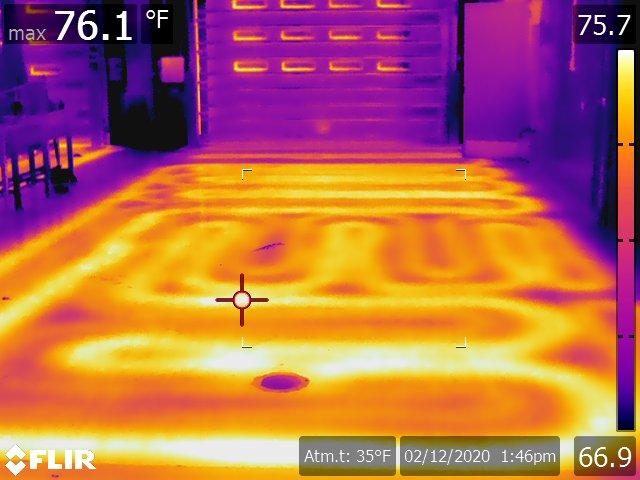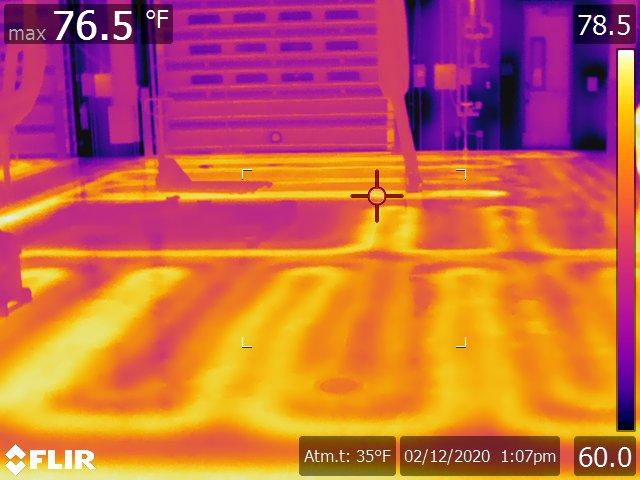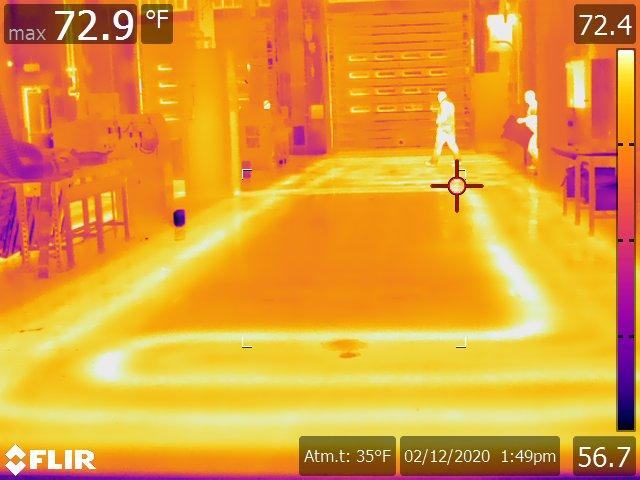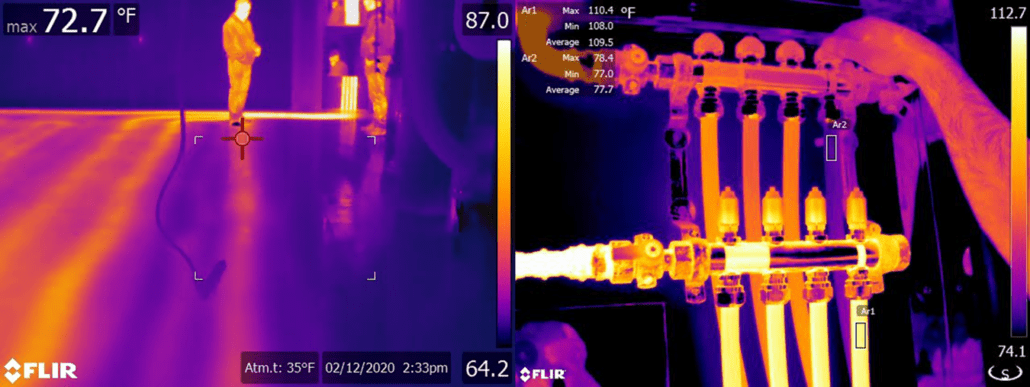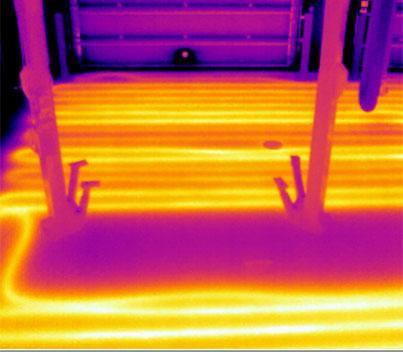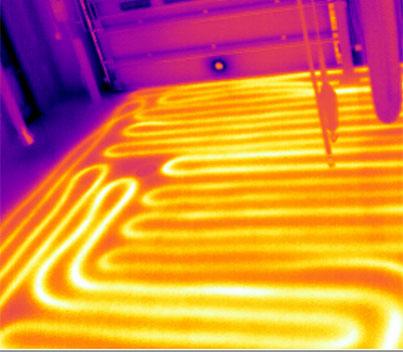Using Infrared Thermal Imaging To Detect Radiant Heat Leaks
Infrared scanning can efficiently and effectively locate radiant heat leaks in commercial and residential buildings with these systems. Radiant heating systems are installed in many floors throughout the colder climates. The continuous hot water supply pipes for these type of systems are not visible to the eye and are should be monitored on a continuing basis in order to ensure that the piping is always functioning properly and continues to remain leak-free. Something as important as concealed radiant heat piping should always be monitored on an annual basis.
An unknown radiant heating system leak can waste energy and cause major property damage if not repaired in a timely manner. Locating the exact location of a leaking hot water pipe (which is buried under a concrete slab) can be quite time consuming and very costly. It can take quite the physical process of tearing up or breaking up big areas of the flooring in order to locate the exact location of a leaking hot water supply pipe. If the location of an embedded leaking pipe is not found quickly and accurately, floors can often end up becoming excessively settled, displaced and severely damaged and very costly to repair.
Radiant Heat Leak Detection Services
- Identifying Radiant Heat Leak
- Accurately Detect Floor Hot Water Heating Pipes
- Radiant Water Leak Locator
- Leaking Pipes In Radiant Heat
What if you have a radiant floor heating leak in the slab? Or an electrical arc in the radiant floor? Can you imagine the time and expense involved in isolating and repairing even a small water leak? Some experts estimate an average of one to five leaks typically developed within 25-40 years of continued grade stress in the average property.
Early detection of problems can help you effectively act on them. This reduces or prevents further damage which saves you time and money. By identifying the variance in temperature between a wet area and the surrounding dry areas thermal imaging can help locate moisture issues that would not be visible during a limited visual home inspection.

